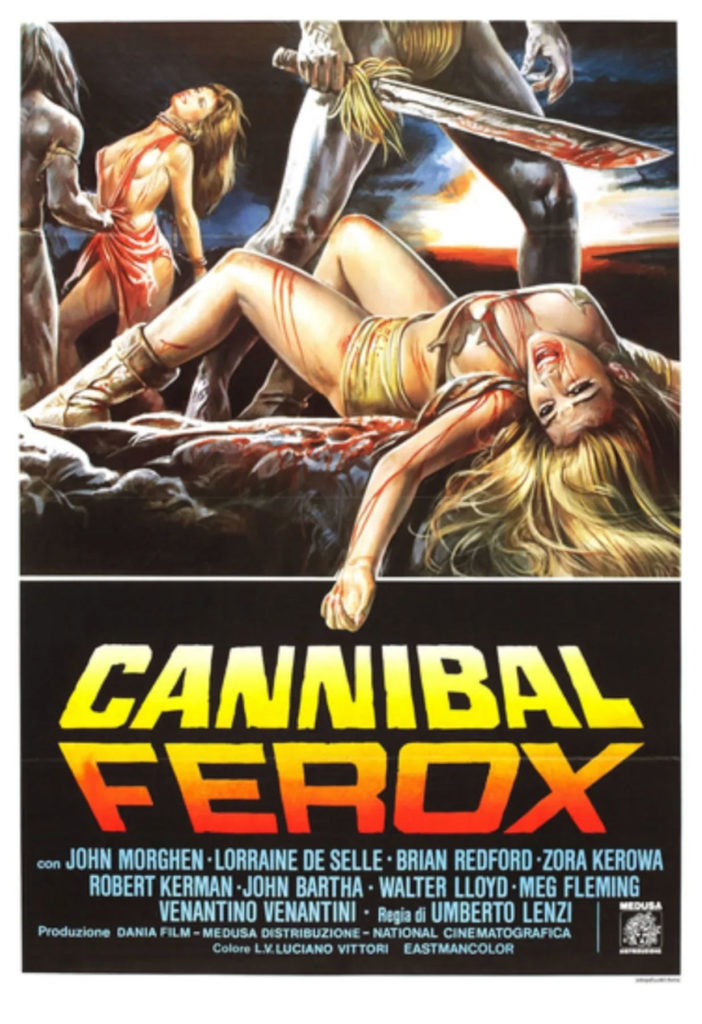 …And then there’s Cannibal Ferox. Released a year after Cannibal Holocaust, in 1981, Cannibal Ferox tries to succeed as a film by taking the most exploitative moments of Holocaust, and wrapping footage around them. Writer/director Umberto Lenzi did not seem to realize that what made Cannibal Holocaust a successful movie was not the animal slaughter or the graphic violence. Those are, arguably, essential parts of the package, but Holocaust is indeed a package deal. It succeeds because most aspects of the film are well done, including story, acting, cinematography, music, etc. Without all those things working together, viewers get, well, Cannibal Ferox.
…And then there’s Cannibal Ferox. Released a year after Cannibal Holocaust, in 1981, Cannibal Ferox tries to succeed as a film by taking the most exploitative moments of Holocaust, and wrapping footage around them. Writer/director Umberto Lenzi did not seem to realize that what made Cannibal Holocaust a successful movie was not the animal slaughter or the graphic violence. Those are, arguably, essential parts of the package, but Holocaust is indeed a package deal. It succeeds because most aspects of the film are well done, including story, acting, cinematography, music, etc. Without all those things working together, viewers get, well, Cannibal Ferox.
Cannibal Ferox stars Lorraine De Selle as Gloria Davis, a doctoral student in anthropology from New York, whose thesis is that cannibalism in tribal cultures does not really exist. Rather, it was a lie fomented by Conquistadors and other Europeans to justify genocide in the New World. In order to prove her thesis, she travels to the Colombian Amazon with her brother, Rudy (Danilo Mattei), and friend, Pat (Zora Kerova). They’re hoping to locate an isolated tribe and do some anthropological stuff.
Not long after going off the beaten path into thick jungle, they begin to see disturbing signs that something is amiss, culminating in the discovery of bloody corpses. Then, a pair of unexpected New Yorkers like themselves pop out of the jungle, one suffering a grievous wound. They are Mike Logan and Joe Costolani (the recently-deceased Giovanni Lombardo Radice and Walter Lucchini). Those two fled New York after ripping off a heroin supplier, in a side plot that takes up far too much of this film’s time. They somehow ended up in the Amazon jungle chasing down emeralds. Continue reading “Lo spettacolo dell'orrore italiano: Cannibal Ferox, aka Make Them Die Slowly”
